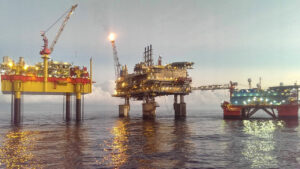Our ultimate goal is to shift away from traditional coal-based sources of energy, and embrace renewable, clean energy. Such will ensure that progress does not come at the cost of aggravating the already-critical levels of greenhouse gases in the Earth’s atmosphere. We have to transition into a low-carbon energy future.
But shifting to renewable energy does not happen overnight.
Using renewable energy to power economic activity is ideal, but not immediately realistic for countries like the Philippines. The technology and the know-how to be acquired remain daunting, and the infrastructure required to support such a shift takes time to build.
Meanwhile, economic growth and development are heavily dependent on having the energy with which to power all economic activity. Companies and industries need power. Critical infrastructure in numerous sectors need energy. The government, in order to govern well and provide the people’s social service needs, must be powered adequately. Lastly, communities, households, and individuals need stable energy so that they could perform their daily routines.
Power interruptions and outages are out of the question, because aside from the disruptions they will cause and the potential output and income that people would lose, these will also send a message to investors that the Philippines is not a good place in which to put their capital.
The Department of Energy has set energy mix targets in the next few years. According to the plan, renewable energy should comprise 35% of the power energy mix by 2030, 50% by 2040, and more than 50% by 2050.
As we move toward these laudable energy goals, the country is compelled to look at the incorporation of natural gas as a transition fuel.
The discovery of the Malampaya gas field illustrates how important natural gas is in meeting the country’s energy demands. Malampaya is the only major producing gas field in the Philippines, and contributes 1.2 gigawatts (GW) to 1.3 GW, thus powering the economy of Luzon.
To further extend the productivity of Malampaya, three wells are expected to be drilled in Bagong Pag-asa, Camago, and Malampaya East this year.
Department of Energy (DoE) Secretary Raphael Lotilla held a press conference last week, where Energy Undersecretary Alessandro Sales confirmed that the vessels for the Malampaya Phase 4 upstream project are currently docked in Labuan, Malaysia. The drillship is expected to arrive by May 30 in Northwest Palawan. These will be used to drill three new wells — two for production and one for exploration. It is expected to take around 150 days, ending in October.
The connection of the two wells — Camago and Malampaya East — to existing production facilities will commence by the last quarter of this year. Mr. Sales was optimistic that the exploration well Bagong Pag-asa will yield good results and provide additional volumes.
If successful, the output from the new wells will extend Malampaya’s life to 2034, beyond its current production limit of 2029.
Meanwhile, the DoE is also encouraging new gas exploration in Malampaya’s adjacent areas. These areas include Eastern Palawan where two service contracts are already active. The DoE added that they are preparing to award three service contracts this year — one in East Palawan and two in the southern portion of the Sulu Sea. Previous studies indicate that there could be 18 trillion cubic feet (TCF) of natural gas in the Sulu Sea. The advantage of these areas is that these are inland waters.
Further areas are also currently being explored including the Cotabato, Agusan, Davao, Cagayan, and Visayas basins.
Prospects look good for the growth of the natural gas industry. The Implementing Rules and Regulations for Republic Act 12120, or the Philippine Natural Gas Industry Development Act, were released last month. In order to sustain this, however, there is a need for more infrastructure investment — LNG terminals, floating storage and regasification units, and pipelines to enable economic development.
Securing investments specific to building LNG infrastructure and ensuring that these investments pan out are thus crucial during this time of transition from traditional to renewable energy. Increased investments also open opportunities to expand natural gas utilization from its current use in power generation to industrial, commercial, and transport, among others. The country will then be able to pursue low-carbon economic growth.
A reliable energy supply reduces risks with energy-related disruptions that can affect economic activities. Natural gas, as a transition fuel, can reduce the country’s vulnerability by providing a cleaner solution compared to coal.
The government is on the right track in setting an ambitious but also realistic energy mix target. Setting targets, however, is different from actually achieving them. The succeeding years will thus be critical to our efforts to respond to the needs of a growing economy and to enable Filipinos to experience a higher quality of life, while at the same time working toward decreasing our greenhouse gas emissions and preventing the catastrophic effects of climate change.
Victor Andres “Dindo” C. Manhit is the president of the Stratbase ADR Institute.
